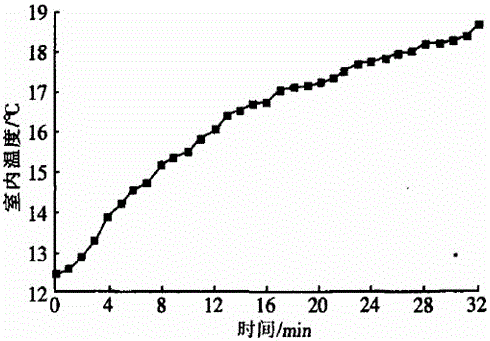Technology for preparing electric-heat solid-wood composite floor with built-in heating layer and product thereof
A solid wood composite floor, built-in heating technology, used in electric heating systems, lighting and heating equipment, heating methods, etc., can solve problems such as board degumming and warping, adhesive force reduction, safety accidents, etc., to achieve direct heat conduction and improve stability. Effects of Sexuality and Mechanical Strength
- Summary
- Abstract
- Description
- Claims
- Application Information
AI Technical Summary
Problems solved by technology
Method used
Image
Examples
Embodiment 1
[0040] Embodiment 1: An electric heating solid wood composite floor with a built-in heating layer, as attached Figure 4-6 As shown, it includes a composite base material layer 1, a carbon fiber paper 2 is bonded on the top of the composite base material layer 1, copper sheet electrodes 3 are provided on both sides of the carbon fiber paper 2, and a decorative veneer 4 is provided above the carbon fiber paper 2; A back plate 5 is provided below the composite substrate layer 1 . The composite substrate 1 includes 8 layers of eucalyptus veneers 6 laminated together, and the wood grain direction of the 8 layers of eucalyptus veneers is vertically pressed and pasted, that is, the wood of the adjacent wood veneers Grain direction is vertical. The eucalyptus veneer is 1.5mm, and the beech veneer is 0.8mm. The eucalyptus veneer is 1.5mm, and the beech veneer is 0.8mm.
[0041] The preparation process of the electric heating solid wood composite floor with built-in heating laye...
Embodiment 2
[0052] Embodiment 2: the preparation method of melamine modified urea-formaldehyde resin glue comprises the following steps;
[0053] (1) Preparation of polyamide; add 30 parts of diethylenetriamine into an appropriate amount of water and stir, add 50 parts of adipic acid while stirring, and after stirring for 30 minutes, uniformly heat up to 160°C within 3 hours and keep it warm for 15 minutes, then cool down to 110°C, add an appropriate amount of water to cool, then heat to 100°C, and get polyamide after stirring evenly;
[0054] (2) Adjust 45 parts of formaldehyde solution to pH 9.5, then add 15 parts of urea, heat to 95°C for 60 minutes, then adjust the solution to pH 5, add 10 parts of polyamide and 30 parts of melamine after fully reacting, and then Add 5 parts of epichlorohydrin dropwise, react while stirring, and wait until the reaction is completed to obtain melamine-modified urea-formaldehyde resin glue.
Embodiment 3
[0055] Embodiment 3: the preparation method of waterproofing agent comprises the following steps;
[0056] (1) Take 80 parts of octamethylcyclotetrasiloxane, 3 parts of N-β-aminoethyl-γ-aminopropylmethyldimethoxysilane and 2 parts of tetramethylcyclotetrasiloxane, mix and stir evenly , heating up to 80°C, then adding 0.2 parts of tetramethylammonium hydroxide, heating up to 125°C for 3 hours, and then removing low boilers to obtain the primary product;
[0057] (2) Add the primary product and melamine at a mass ratio of 2:1, stir to 70-80°C while heating, and react for 1.5 hours to obtain the finished product.
PUM
| Property | Measurement | Unit |
|---|---|---|
| thickness | aaaaa | aaaaa |
| thickness | aaaaa | aaaaa |
| particle diameter | aaaaa | aaaaa |
Abstract
Description
Claims
Application Information
 Login to View More
Login to View More - R&D
- Intellectual Property
- Life Sciences
- Materials
- Tech Scout
- Unparalleled Data Quality
- Higher Quality Content
- 60% Fewer Hallucinations
Browse by: Latest US Patents, China's latest patents, Technical Efficacy Thesaurus, Application Domain, Technology Topic, Popular Technical Reports.
© 2025 PatSnap. All rights reserved.Legal|Privacy policy|Modern Slavery Act Transparency Statement|Sitemap|About US| Contact US: help@patsnap.com



